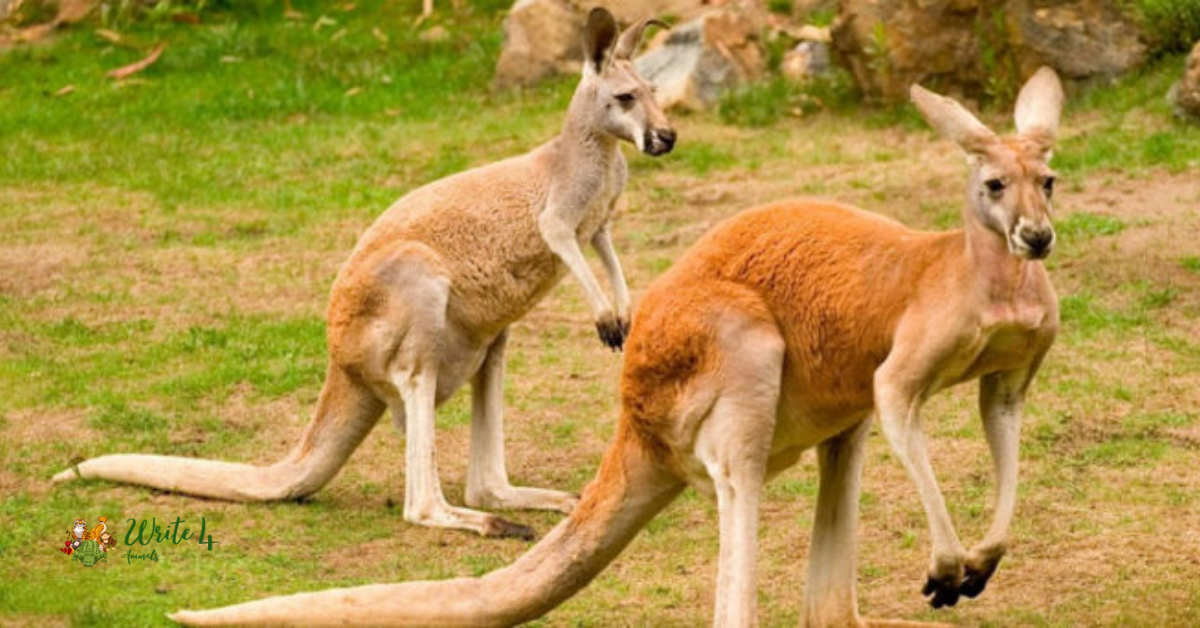Energy is a fundamental aspect of life, and the animal kingdom showcases an incredible spectrum of vitality. From the microscopic to the gigantic, animals have evolved various mechanisms to harness and utilize energy in awe-inspiring ways. In this exploration, we’ll delve into the lives of the top 12 most energetic animals in the world, each demonstrating unparalleled vigor and adaptability.
Top 12 Most Energetic Animals in the World
1. Cheetah
The cheetah (Acinonyx jubatus) stands as the epitome of speed and agility in the animal kingdom. With its distinctive spotted coat and sleek build, the cheetah is built for acceleration. Renowned as the fastest land mammal, it can reach speeds of up to 75 miles per hour in just a few seconds. This incredible burst of speed is a vital aspect of the cheetah’s hunting strategy, allowing it to close in on prey with unparalleled velocity.

Possessing a lightweight frame and powerful leg muscles, the cheetah combines speed with exceptional maneuverability. Its keen eyesight locks onto prey from a distance, and then it relies on its incredible acceleration to swiftly chase down the target. While these bursts of energy are short-lived, they are essential for securing a successful hunt in the African savannas where the cheetah roams.
Despite its unmatched speed, the cheetah pays a price for its energetic feats, often requiring an extended period of rest after a sprint. Conservation efforts are crucial for ensuring the survival of this remarkable species, as habitat loss and human-wildlife conflict threaten their existence.
2. Hummingbird
The hummingbird, belonging to the family Trochilidae, is a testament to nature’s mastery of flight and energy efficiency. These tiny, iridescent birds are not only a visual delight but also showcase extraordinary aerial capabilities. With wings that beat up to 80 times per second, hummingbirds can hover in mid-air and maneuver with unmatched precision.

Hummingbirds are fueled by a high-energy diet of nectar from flowers, supplemented with insects and spiders for protein. Their unique ball-and-socket joint at the shoulder allows a full range of motion for their wings, enabling them to perform acrobatic feats in the pursuit of food. Despite their rapid metabolism, hummingbirds enter a state of torpor during the night, conserving energy by significantly lowering their metabolic rate.
These avian marvels play a crucial role in pollination as they visit numerous flowers daily in search of nectar. Their irreplaceable contribution to ecosystems makes them a fascinating example of how energy efficiency and specialization can coexist in the natural world.
3. Peregrine Falcon
The peregrine falcon, renowned for its breathtaking stoop or high-speed dive, is a majestic bird of prey that has captivated humans for centuries. With a wingspan ranging from 3 to 4 feet and a streamlined body, the peregrine falcon is built for speed and precision in the air.

Known as the fastest bird and, indeed, the fastest animal on the planet, the peregrine falcon achieves staggering speeds while hunting. During a stoop, it can reach speeds exceeding 240 miles per hour as it descends upon its prey with pinpoint accuracy. This remarkable speed is facilitated by its aerodynamic design, with pointed wings and a tapered body reducing drag during rapid descents.
The peregrine falcon’s high-energy lifestyle demands a diet rich in other birds, and its hunting prowess relies on acute vision to spot prey from great distances. Conservation efforts, including banning harmful pesticides like DDT, have played a crucial role in the recovery of peregrine falcon populations, showcasing the significance of human intervention in preserving these majestic raptors.
4. Kangaroo
The kangaroo, a symbol of the Australian outback, showcases a unique blend of strength and agility. Marsupials belonging to the Macropodidae family, kangaroos are characterized by their powerful hind legs, long tails, and distinctive hopping locomotion. Their energy-efficient method of movement allows them to cover large distances with remarkable speed and endurance.
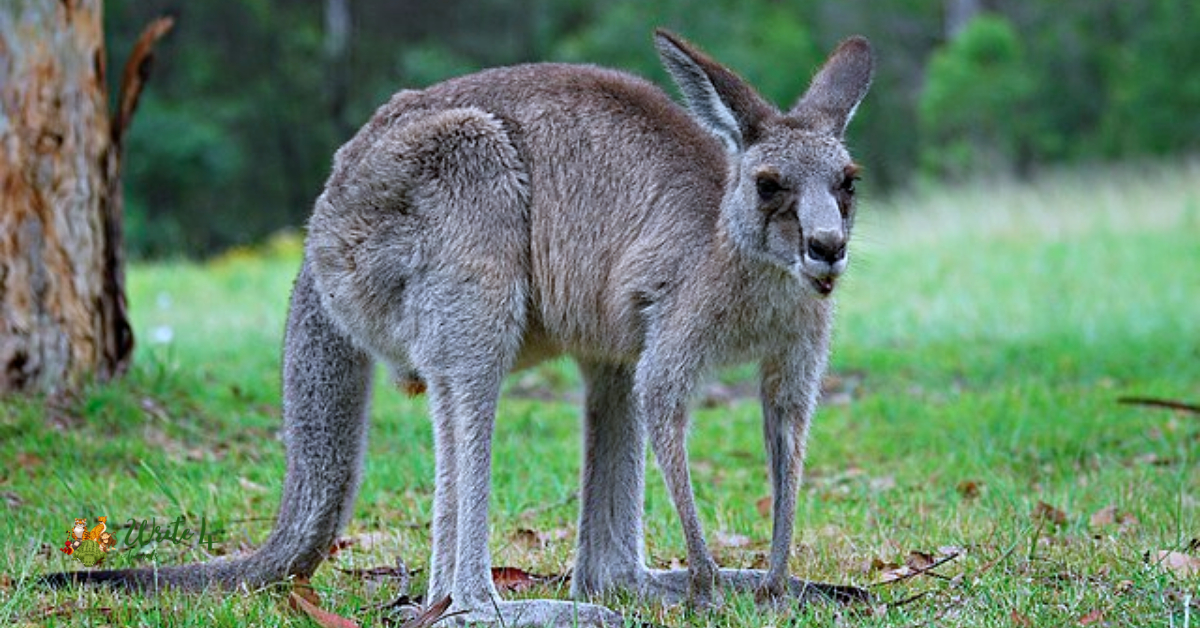
Kangaroos’ impressive leg muscles, particularly the powerful quadriceps, provide the force necessary for their signature hopping. This method of travel not only conserves energy but also allows them to navigate diverse landscapes, from open plains to dense forests. The tail serves as a balancing mechanism, crucial for maintaining stability during rapid hops.
In addition to their physical prowess, kangaroos exhibit remarkable maternal strength. Female kangaroos, or flyers, carry and protect their young, called joeys, in their pouches. This unique reproductive strategy showcases the adaptability and resilience of kangaroos in the challenging environments they inhabit.
5. African Elephant
The African elephant, the largest land mammal, roams the vast savannahs and forests of Africa, embodying strength, intelligence, and social complexity. These majestic giants, belonging to the Elephantidae family, are characterized by their large ears, long trunks, and tusks.

African elephants exhibit incredible physical strength, with males, known as bulls, capable of weighing up to several tons. Their trunks, a fusion of the upper lip and nose, serve as versatile tools for various tasks, including lifting objects, gathering food, and even displaying affection. The tusks, elongated incisor teeth, contribute to their impressive appearance and are used for digging, stripping bark, and in some cases, for defense.
Beyond their physical strength, African elephants are known for their tight-knit social structures. They form complex family units led by matriarchs, and their emotional intelligence and communication skills are highly developed. Unfortunately, these magnificent creatures face threats from poaching and habitat loss, underscoring the need for conservation efforts to protect their iconic presence on the African continent.
6. Arctic Tern
The Arctic tern, a master of long-distance migration, holds the record for the longest annual journey of any bird. Found in the Arctic and Antarctic regions, these small seabirds, part of the Laridae family, embark on an astonishing round-trip migration that spans tens of thousands of miles.
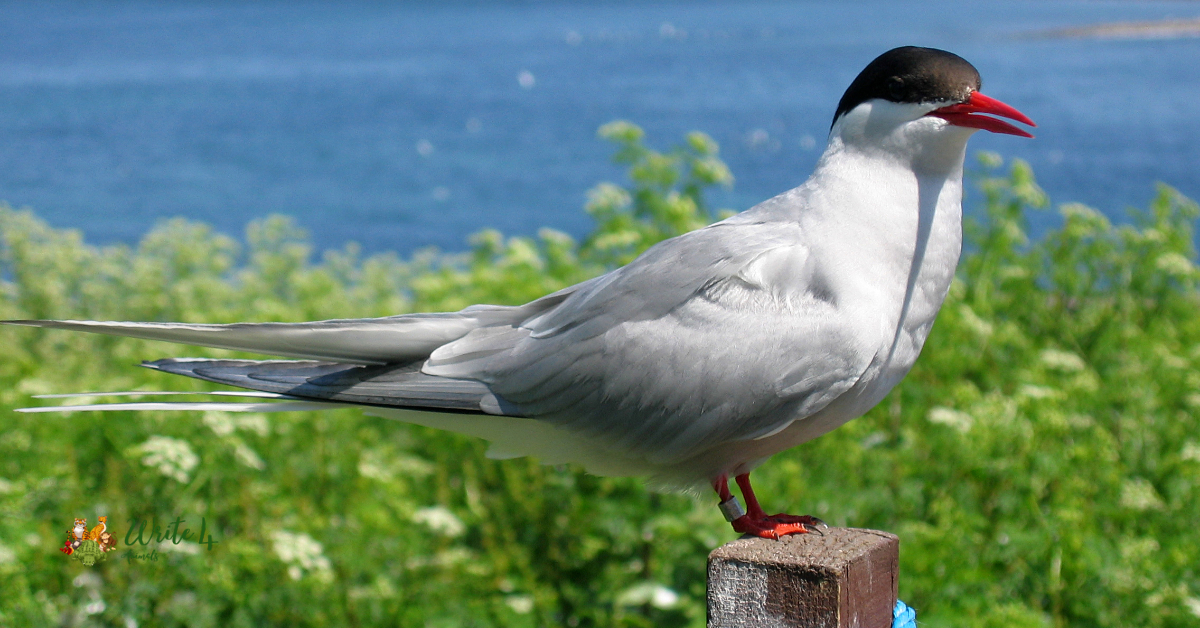
What sets the Arctic tern apart is its incredible endurance and navigational skills. During its migration, it covers distances equivalent to flying from the Earth to the moon and back over its lifespan. This feat is achieved through a combination of efficient flight mechanics, with sleek wings and a buoyant body allowing it to ride air currents for extended periods.
The Arctic tern’s migratory journey is not only a testament to its physical stamina but also reflects its adaptation to exploit seasonal food availability in the polar regions. As climate change poses challenges to their habitats and food sources, the resilience of the Arctic tern serves as a poignant reminder of the interconnectedness of species and the delicate balance of our planet’s ecosystems.
7. Blue Marlin
The blue marlin, a legendary inhabitant of the world’s oceans, is a powerful and swift apex predator. Characterized by its distinctive elongated bill and cobalt-blue body, this species of marlin (Makaira nigricans) is renowned for its incredible speed and agility in the water.
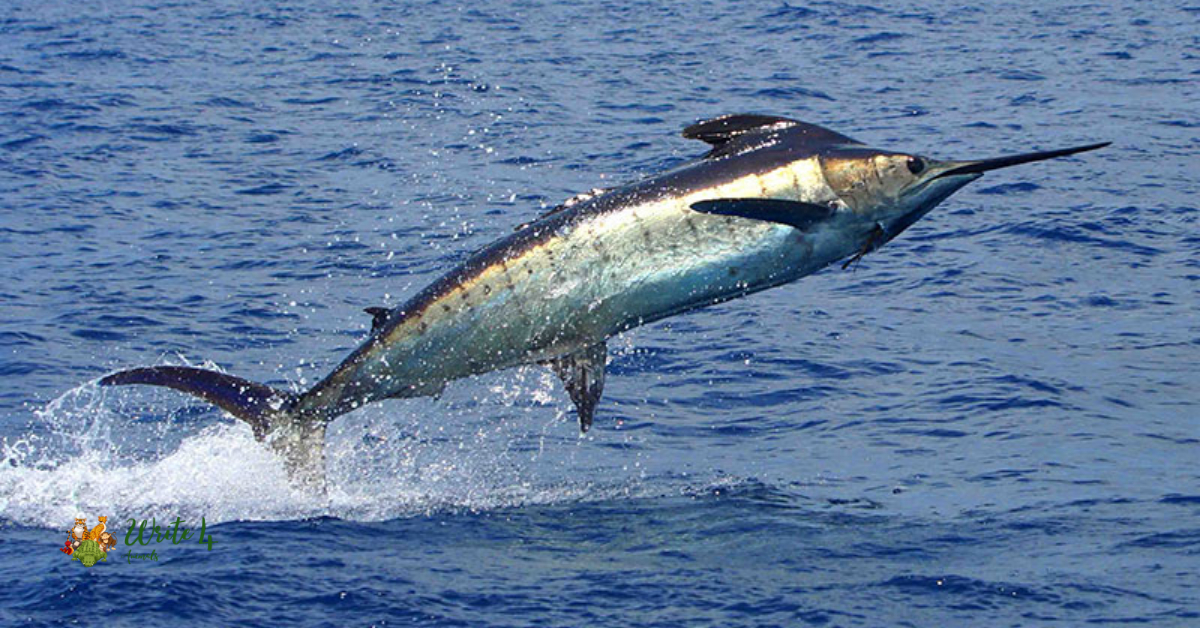
Equipped with a streamlined body and a crescent-shaped tail, the blue marlin is built for high-speed pursuits. Capable of reaching speeds of up to 82 miles per hour, it is considered one of the fastest fish in the ocean. This remarkable speed is crucial for hunting prey, including smaller fish and squid, and for evading larger predators.
Beyond its physical prowess, the blue marlin is also prized in sport fishing for its challenging fights and acrobatic displays. Unfortunately, these majestic creatures face threats from overfishing and habitat degradation, highlighting the importance of sustainable practices to ensure the conservation of this iconic oceanic species.
8. Golden Eagle
The golden eagle (Aquila chrysaetos) reigns supreme as one of the most powerful and agile birds of prey, showcasing unparalleled strength and keen predatory instincts. Found across the Northern Hemisphere, from North America to Europe and Asia, these raptors are admired for their majestic appearance and formidable hunting skills.

With a wingspan that can exceed seven feet, golden eagles soar through the skies with remarkable grace. Their powerful talons and beaks are well-adapted for capturing and consuming a diverse range of prey, including mammals, birds, and even large ungulates. Golden eagles are known for their breathtaking aerial displays during courtship, where they engage in high-altitude acrobatics.
These apex predators play a crucial role in maintaining ecological balance by controlling populations of various prey species. However, like many birds of prey, golden eagles face threats such as habitat loss, poisoning, and collisions with human structures. Conservation efforts are essential to protect these magnificent birds and ensure their continued presence in the wild.
9. Brown Hare
The brown hare (Lepus europaeus) is a fleet-footed mammal known for its remarkable speed and agility. Found in open landscapes and fields across Europe and parts of Asia, these hares exhibit a distinctive behavior known as “boxing” during the breeding season.
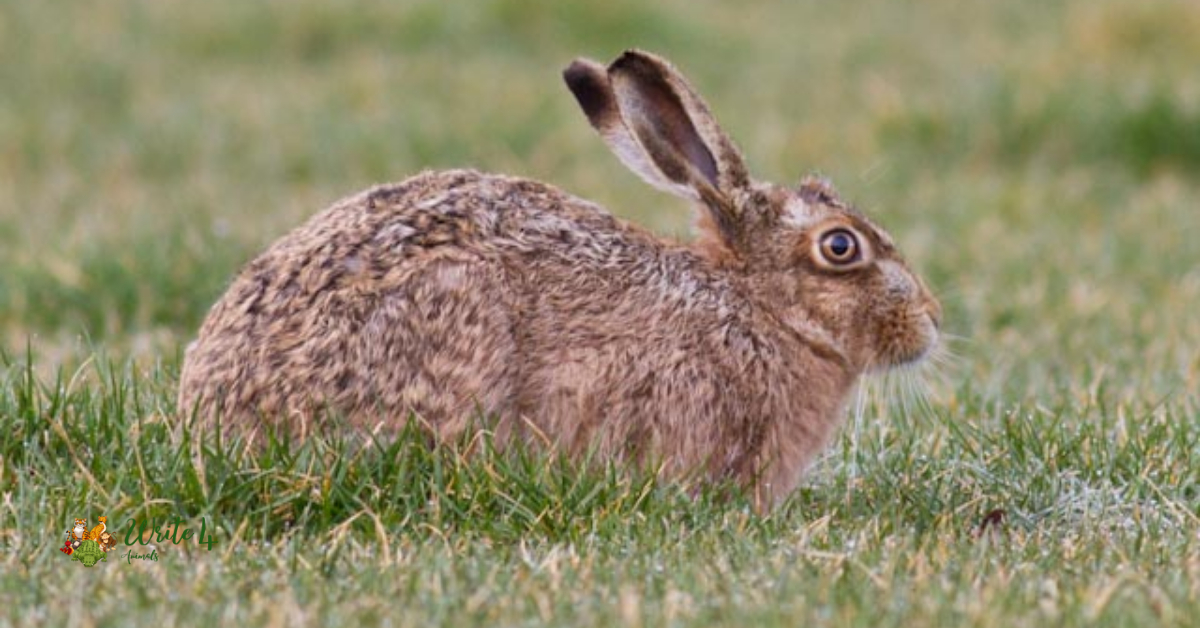
Built for speed, brown hares have long hind legs that allow them to execute rapid sprints and agile maneuvers to evade predators. Their large eyes and ears contribute to heightened sensory perception, enabling them to detect potential threats from a distance. During the breeding season, male hares engage in playful boxing matches to establish dominance and gain the attention of females.
Brown hares’ ability to reach speeds of up to 45 miles per hour makes them formidable opponents for predators, including foxes and birds of prey. Despite their agility, brown hares face challenges such as habitat loss and changes in agricultural practices, emphasizing the need for conservation efforts to protect these iconic sprinters of the open landscapes.
10. Common Swift
The common swift (Apus apus) is a remarkable bird that defies conventional avian norms, spending the majority of its life in the air. Found across Europe, Asia, and Africa, these agile birds are adapted for a life of perpetual flight, with a streamlined body, long wings, and a distinctive scythe-like shape.

Swifts are unparalleled masters of the sky, capable of flying for months without landing. Their superb aerial abilities are supported by long, pointed wings and a rapid, efficient wingbeat that enables them to cover vast distances in search of food. Common swifts are known for their breathtaking aerial displays, soaring at incredible altitudes and executing intricate maneuvers.
These birds are not only experts in flight but also exhibit fascinating behaviors, such as sleeping while airborne. They feed on insects caught in mid-air and even mate on the wing. The common swift’s lifestyle emphasizes the extraordinary adaptability of species to specific ecological niches, showcasing nature’s ingenuity in overcoming challenges.
11. Sailfish
The sailfish (Istiophorus platypterus) is a pinnacle of aquatic speed and agility, gracing the world’s oceans with its distinctive sail-like dorsal fin and breathtaking acrobatics. Found in both the Atlantic and Pacific Oceans, sailfish are prized by anglers for their remarkable speed and challenging fights.
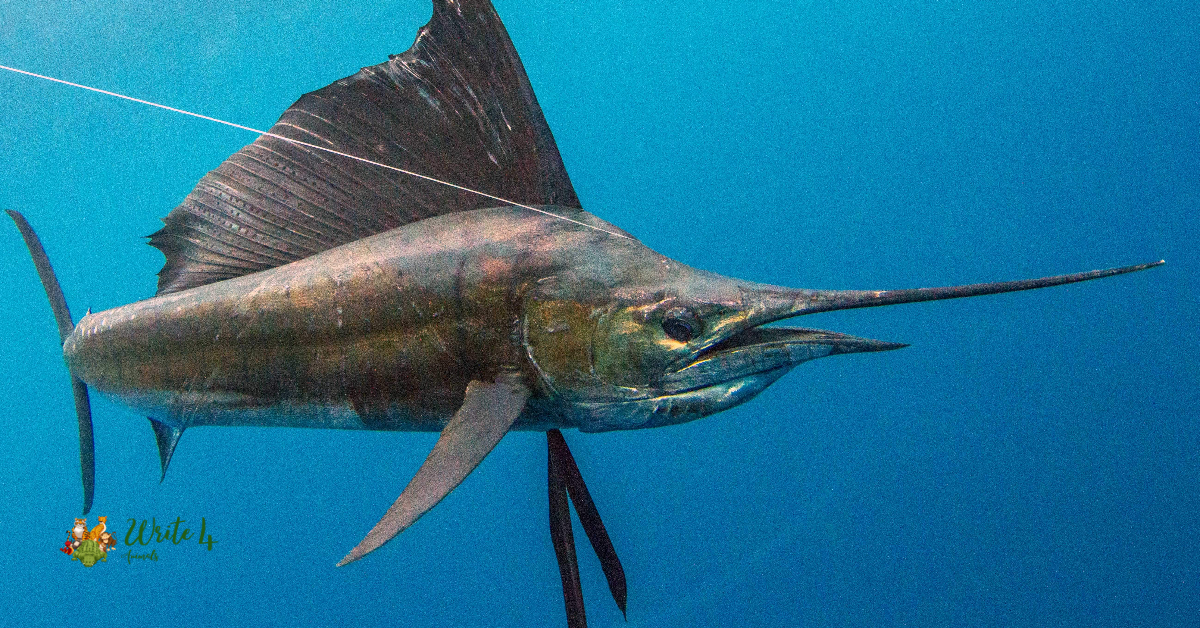
Renowned as the fastest fish in the ocean, sailfish can reach speeds of up to 68 miles per hour. Their elongated bodies and powerful tails contribute to their exceptional swimming capabilities. Sailfish are known for their stunning hunting technique called “sailing,” where they use their dorsal fins to corral schools of fish before using their bills to slash through the prey.
Beyond their speed, sailfish are recognized for their vibrant colors and dramatic displays during courtship. Despite their popularity in sport fishing, conservation efforts are crucial to ensure sustainable practices and protect the populations of these magnificent oceanic speed demons.
12. Ant
Ants, belonging to the family Formicidae, are tiny yet mighty insects that play essential roles in ecosystems across the globe. Known for their highly organized social structures, ants are adept at cooperation, communication, and efficient resource utilization.
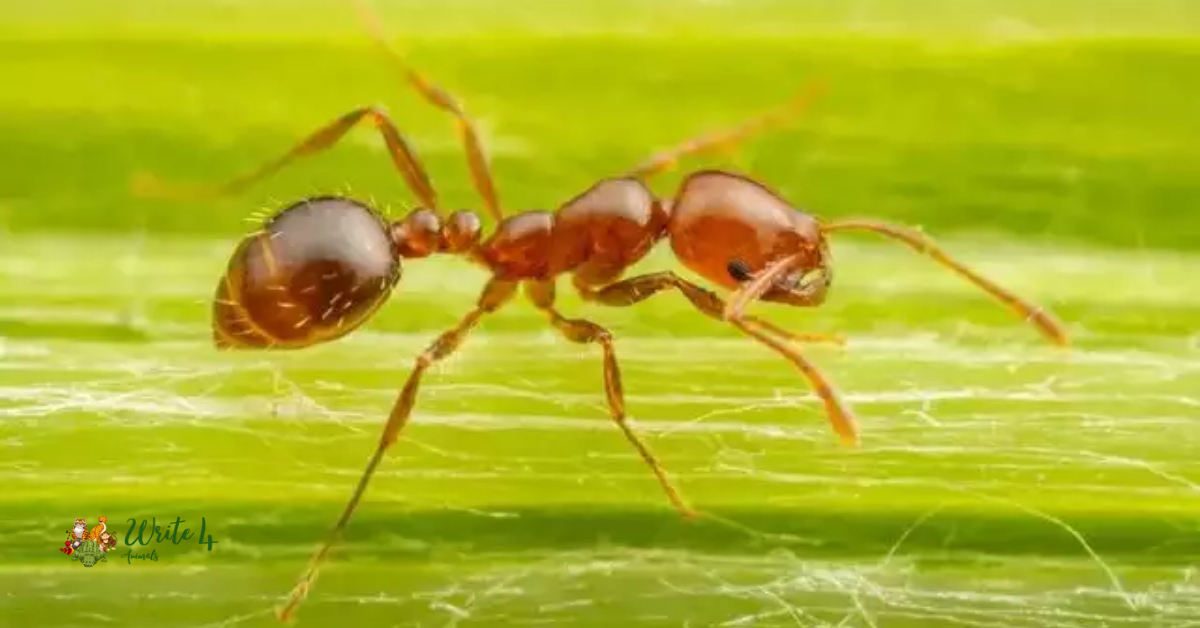
Ant colonies consist of individuals with specific roles, including workers, soldiers, and a queen. Their strength lies in their ability to work collectively to forage for food, defend the nest, and care for their young. Ants exhibit remarkable strength relative to their size, with some species capable of carrying loads several times their body weight.
Beyond their ecological roles, ants contribute to soil health through nest-building activities and aid in the decomposition of organic matter. Their intricate communication systems, often involving chemical signals, allow them to navigate complex environments and coordinate collective actions.
Despite their small size, ants are integral to the balance of ecosystems, emphasizing the importance of understanding and conserving these tiny titans in the intricate web of life.
How is Animal Energy Measured?
Animal energy is measured through various physiological and behavioral parameters that reflect the metabolic processes and activity levels of an organism. The key methods include:
1. Metabolic Rate: The rate at which an animal consumes oxygen and produces carbon dioxide during metabolism is a fundamental measure of energy expenditure. This is often quantified as the Basal Metabolic Rate (BMR) or Standard Metabolic Rate (SMR).
2. Calorimetry: Direct calorimetry measures the heat produced by an animal as it metabolizes food. Indirect calorimetry estimates energy expenditure by measuring oxygen consumption and carbon dioxide production.
3. Activity Levels: Monitoring an animal’s behavior, movement patterns, and activity levels provides insights into its energy expenditure. This includes techniques like accelerometry, which measures acceleration and deceleration.
4. Body Composition: Changes in an animal’s body composition, including fat and muscle mass, can indicate fluctuations in energy reserves and utilization.
5. Feeding Behavior: Observing an animal’s feeding habits, food intake, and digestion efficiency can provide valuable information about its energy requirements.
6. Growth Rates: In younger animals, growth rates can be indicative of the energy available for development.
Are Energetic Animals More Susceptible to Environmental Changes?
While energetic animals often possess adaptive traits that enhance their survival, they can be both positively and negatively affected by environmental changes. Here are considerations for energetic animals:
1. Positive Aspects:
– Adaptability: Energetic animals may have evolved efficient physiological mechanisms for energy utilization, making them adaptable to varying environmental conditions.
– Migration: Some energetic species, such as migratory birds or fish, showcase the ability to cover long distances, allowing them to access different habitats as needed.
2. Negative Aspects:
– Specialization: Highly energetic animals may be specialized for specific ecological niches. Environmental changes that alter these niches can pose challenges if the species is unable to adapt quickly.
– Temperature Sensitivity: Energetic animals may be sensitive to temperature changes, affecting their metabolism, breeding patterns, and overall energy balance.
– Resource Availability: Environmental changes, such as habitat loss or alterations in food availability, can impact the energy resources vital for the survival of energetic species.
Conclusion
Nature’s design is a testament to the diversity of life and the incredible ways animals have evolved to harness and expend energy. From the swift cheetah to the tiny hummingbird and the massive blue whale, each species has its own unique strategy for navigating the world and meeting its energy demands. Exploring the lives of these energetic animals not only deepens our appreciation for the wonders of the natural world but also inspires awe at the remarkable adaptations that allow them to thrive in their environments.
Frequently Asked Questions
[sc_fs_multi_faq headline-0=”h4″ question-0=”What makes cheetahs the most energetic animals on land?” answer-0=”Cheetahs are considered the most energetic animals on land due to their exceptional speed and agility. Their bodies are finely tuned for explosive bursts of speed, reaching up to 75 miles per hour in just a few seconds. Specialized adaptations, including powerful muscles and a flexible spine, contribute to their ability to execute lightning-fast maneuvers while hunting.” image-0=”” headline-1=”h4″ question-1=”Why are hummingbirds considered energetic animals?” answer-1=”Hummingbirds are considered energetic animals due to their high metabolism and rapid wing beats. These tiny birds beat their wings at an astonishing rate, sometimes exceeding 80 beats per second. To fuel this activity, hummingbirds consume several times their body weight in nectar each day. Their efficient cardiovascular systems, with hearts beating over 1,200 times per minute, highlight their remarkable energy expenditure.” image-1=”” headline-2=”h4″ question-2=”How do blue whales exhibit energy in their behaviors?” answer-2=”Blue whales, despite their serene appearance, exhibit energy in their feeding behaviors. As filter-feeders, they engulf large quantities of water to capture krill, expending significant energy in the process. The opening and closing of their massive mouths, coupled with the expulsion of water, contribute to their energy expenditure. Despite their enormous size, blue whales demonstrate grace and efficiency in navigating the oceans in search of food.” image-2=”” headline-3=”h4″ question-3=”What is unique about kangaroos’ energy conservation?” answer-3=”Kangaroos are unique in their energy conservation through their distinctive hopping locomotion. Their powerful hind legs and muscular tails enable efficient hopping, allowing them to cover vast distances with minimal energy expenditure. Additionally, kangaroos can store elastic energy in their tendons, contributing to the propulsion of their leaps and enhancing their overall endurance.” image-3=”” headline-4=”h4″ question-4=”Why are Arctic terns considered masters of migration?” answer-4=”Arctic terns are considered masters of migration due to the incredible distances they cover during their annual journey. These seabirds travel from their Arctic breeding grounds to the Antarctic and back, covering approximately 44,000 miles (70,800 kilometers) each year. This remarkable migration showcases their unparalleled stamina and endurance, relying on favorable wind patterns and their own physical adaptations for the arduous journey.” image-4=”” headline-5=”h4″ question-5=”What are some other examples of highly energetic animals in the world?” answer-5=”In addition to cheetahs, hummingbirds, blue whales, kangaroos, and Arctic terns, other examples of highly energetic animals include dolphins, which are known for their playful and acrobatic behaviors, and grey wolves, renowned for their endurance during hunting. Each species has evolved unique adaptations to meet the specific energy demands of their lifestyles.” image-5=”” count=”6″ html=”true” css_class=””]
Also Read
1. Top 12 Most Evil Animals in the World
2. Alabai Dog price in india 2023
